Page 137 of 288

To provide maximum protection, safety belts
must always be positioned correctly on the
wearer's body.
... Adjust the front seat and head restraint
properly
c::> page 53, Front seats.
• Make sure the seatback of the rear seat
bench is in an upright position and securely
latched in place before using the belt
c::> ,&..
... Hold the belt by the tongue and pull it even
ly across the chest and pelvis
c::> ,&. .
""Insert the tongue into the correct buckle of
your seat until you hear it latch securely
c::>fig. 117.
.., Pull on the belt to make sure that it is se-
curely latched in the buckle.
Automatic safety belt retractors
Every safety belt is equipped with an automat
ic belt retractor on the shoulder belt . This fea
ture locks the belt when the belt is pulled out
fast, during hard braking and in an accident.
The belt may also lock when you drive up or
down a steep hill or through a sharp curve. During normal driving the belt lets you move
freely.
Safety belt pretensioners
The safety belts are equipped with a belt pre
tensioner that helps to tighten the safety belt
and remove slack when the pretensioner is ac
tivated
c::> poge 137. The function of the pre
tensioner is monitored by a warning light
c::> page 21.
Switchable locking feature
Every safety belt except the one on the driver
seat is equipped with a switchable locking fea
ture that
must be used when the safety belt is
used to attach a child seat. Be sure to read the important information about this feature
c::> page 177 .
A WARNING
Improperly positioned safety belts can
cause serious injury in an accident
c::> page 135, Safety belt position.
-Safety belts offer optimum protection
only when the seatback is upright and
Safety belts 135
belts are properly positioned on the
body.
- Always make sure that the rear seat
backrest to which the center rear safety
belt* is attached is securely latched
whenever the rear center safety belt is
being used. If the backrest is not secure
ly latched, the passenger will move for
ward with the backrest during sudden
braking, in a sudden maneuver and espe
cially in a crash .
- Never attach the safety belt to the buck
le for another seat . Attaching the belt to
the wrong buckle will reduce safety belt
effectiveness and can cause serious per
sonal injury.
- A passenger who is not properly restrain
ed can be seriously injured by the safety
belt itself when it moves from the stron
ger parts of the body into critical areas
like the abdomen.
- Always lock the convertible locking re
tractor when you are securing a child seat in the vehicle
c::> page 179.
(D Tips
For information on safety belt pretension
ers, refer to
c::> page 13 7.
Safety belt position
Correct belt position is the key to getting
maximum protection from safety belts.
Fig. 118 Safety belt position
Use the height adjustment to change the posi
tion of the shoulder belt of the front safety
belts .
~
Page 138 of 288

136 Safet y belt s
A WARNING
Imprope rly positioned safety belts can
cause serious persona l injury in an acci
dent.
-
- The shoulder belt shou ld lie as close to
the center of the collar bone as poss ible
and should fit we ll on the body. Hold the
belt above the latch tongue and pull it
evenly across the chest so that it sits as
low as possible on the pelvis and there is
no p ressure on the abdomen. The be lt
sho uld a lways f it snugly
¢ fig . 118. Pull
on the be lt to tighten if necessary.
- A loose-fitt ing safety be lt can cause seri
o us in juries by s hifting its position on
yo ur body from the stro ng bones to more
vulnerab le, so ft tissue and cause serious
injury.
- Alw ays re ad and heed all WARN INGS and
other impor tant in format io n
¢ page 134.
Pregnant women must al so be correctly
restrained
The best way to protect the fetus is to moke
sure that expectant mothers always wear
safety belts correctly -throughout the preg
nancy.
Fi g. 1 19 Safety be lt pos ition du ring preg nancy
To provide maxim um protection, safety belts
must always be pos it io ned correctly on the
wearer 's body
¢ page 135.
.,. Adjust the front seat and adjustable head
restraint* correctly
c::> page 53, Front seats .
.,. Ho ld the belt by the tongue and pu ll it even
ly across the chest and pelvis¢
fig. 119,
¢ _&..
.,. Insert the tongue into the correct buck le of
your seat unt il you hear it latch securely
¢page 134, fig . 117.
.,. Pull on the belt to make sure that it is se·
curely latched in th e buckle .
_& WARNING
Imprope rly posit io ned safety be lts ca n
c a use ser ious perso nal in ju ry in an a cci
den t.
-
- Expe cta nt mo thers m ust alw ays wea r the
lap portion of the safety belt as low as
possible across the pelvis and below t he
round ing of the abdomen.
- Always read and heed all WA RNINGS and
other important information¢.&.
in Fas
tening safety belts on page 135.
Unfastening safety belts
Unbuckle the safety belt with the red release
button only after the vehicle has stopped .
Fig. 120 Releas ing the tong ue fro m the buck le
.,. Push the red release button on the buckle
¢ fig. 120 . The be lt tongue will spring out
of the buckle
¢ _& .
.,. Le t the belt wind up on the retractor as you
gu ide the be lt tongue to its stowe d posi tion .
_& WARNING
Neve r unfa sten sa fety belt whi le the vehi
cle is moving. Doing so will increase yo ur
risk of being in ju red o r killed.
Page 139 of 288

Adjusting safety belt height
With the aid of the safety belt height adjust
ment, the three point safety belt strap rout
ing can be fitted to the shoulder area, accord
ing to body size .
Fig. 121 Safety belt height ad justmen t for th e front
seats -loop -aro un d fit tings
The shoulder belt should lie as close to the
center of the collar bone as possible and
should fit well on the body ¢,&.
in Safety belt
position on page 136.
.,. Push
the loop -around fittings up c> fig . 121
@ , or
.,. squeeze together the@button, and push
the loop-around fittings down@.
.,. Pull the belt to make sure that the upper at
tachment is properly engaged.
A WARNING
Always read and heed all WARNINGS and
other important information
c> page 134.
@ Tips
With the front seats, the height adjust
ment of the seat can also be used to adjust
the position of the safety belts.
Improperly worn safety belts
Incorrectly positioned safety belts can cause severe injuries.
Wearing safety belts improperly can cause se
rious injury or death. Safety belts can only
work when they are correctly positioned on
the body. Improper seating positions reduce
the effectiveness of safety belts and will even increase the risk of injury and death by mov-
Safety belts 13 7
ing the safety belt to critical areas of the
body. Improper seating positions also in
crease the risk of serious injury and death
when an airbag deploys and strikes an occu
pant who is not in the correct seating posi
tion . A driver is responsible for the safety of
all vehicle occupants and especially for chil
dren . Therefore:
.,. Never permit anyone to assume an incorrect
sitting position in the vehicle while traveling
~ .&. -
A WARNING
Improperly worn safety belts increase the
risk of serious persona l injury and death
whenever a vehicle is being used.
- Always make sure that all vehicle occu
pants are correctly restrained and stay in
a correct seating position whenever the
vehicle is being used.
-Always read and heed all WARNINGS and
other important information
r:::>page 134 .
Safety belt preten
sioners
How safety belt pretensioners work
In front, side and rear-end collisions above a
particular severity and in a rollover, safety
belts are tensioned automatically .
Reversible safety belt tensioners
The safety belts on the front seats are equip
ped with power reversible tensioners . The fol
lowing functions are avai lable when the driv
er's/front passenger's safety belts are fas
tened:
-Automatic tensioners: at the start of a drive,
the safety belts automatically adjust to the
passenger after a certain time period or ve
hicle speed . To switch the automatic ten
sioners off, select the following in the MMI: .,..
Page 140 of 288

138 Safety belts
ICAR !function button> (Car )* sys tem s> Ve
hicle setting s > Sea ts > Dri ver 's seat or Pas
senger 's se at > Autom atic belt ten sioner
>
Off .
-In certain driving situations, the safety be lts
may tighten with a reversib le tensioning
function
c:> page 90.
- The safety belts may also tighten with this
revers ible tensioning f unction in m inor colli
s ions.
Pyrotechnic safety belt preten sioner s
The sa fety belts are equipped with safety be lt
pretensioners. The system is activated by sen
sors in front, side and rear-end collisions of
great severity and in a rollover. Th is tightens
the belt and takes up be lt slack
c:> &. in Service
and disposal of safety belt pretensioner on
page 138 .
Taking up the slack helps to reduce
forward occupant movement during a co lli
sion.
,& WARNING
- It is possib le for the pretensioners to de
ploy incorrect ly .
- T he py rotechnic system can only pr ovide
pro te ction for one co llision.
If t he pyro
technic p retensioners dep loy, the p reten
sioning system must be replaced .
@ Tips
The pyrotechnic safety belt p retens ioners
can only deploy once .
- The safety belt pretens ione rs do no t de
ploy in mino r frontal and side col lisions,
i n rear -end collisions, in rollove rs and in
collisions invo lving very litt le impact
force.
- A f ine d ust is released when the pyro
technic safety belt pretensioners deploy.
This is normal and is not caused by a fire
i n the veh icle.
- The relevant safety requirements must
be observed when the vehicle or compo
nents of the system are scrapped. A
qualified dea lership is familiar with
these regulations and w ill be pleased to
pass on the informat io n to you . - Be sure to observe all safety, env
iron
menta l and other regu lations if the ve hi
cle or individual parts of the system, par
ticu larly the safety belt or airbag, are to
be disposed. We recommend you have
your authorized Audi dealer perform this service fo r you.
Service and disposal of safety belt
pretensioner
T he safety belt pretens ioners are parts o f the
safety belts on your Audi . Insta lling, remov
ing, servicing or repairing of be lt pretension
ers can damage the safety belt system and
prevent it from working correctly in a co lli
s ion.
There are some important t hings you have to
know to make sure that the effectiveness of
the system w ill not be impaired and that dis
carded components do no t cause injury or pol
l u te the environment .
A WARNING
-Improper care, serv ic ing and repair p roce-
du res can increase the risk of pe rsonal in
j u ry and death by prevent ing a safety belt
p retensioner from activ ating w hen neede d
or activa ting it unexpectedly:
- T he belt pretensione r system can be a ct i
vated only once. If be lt pretensioners
have been activated , the system m ust be
replaced .
- Never repair, adjus t, or change any parts
of the safety be lt system .
- Safety belt systems incl uding safety belt
pretensioners cannot be repaired. Spe
cial procedures are required for removal,
installation and disposa l of th is system.
- For any wo rk on the safety belt system,
we strongly recommend t hat you see
your author ized Audi dealer or qualif ied
technician who has an Audi approved re pa ir manua l, train ing and special equ ip
ment necessary.
Page 141 of 288
@ For the sake of the environment
Undeployed airbag modu les and preten
sioners might be classified as Perchlorate
Material -specia l hand ling may apply, see
www.dtsc.ca.gov/hazardouswaste/per chlorate. When the vehicle or parts of the
restraint system including airbag modules
safety belts w ith pretens ioners are scrap
ped, all applicable laws and regulat ions
m ust be observed. Yo ur authorized Aud i
dea le r i s familiar w ith these requi rements
and we recommend that you have your
dea ler perform this service for you.
Sa fety belts 139
•
•
•
Page 142 of 288

140 Airbag sys tem
Airbag system
Important things to know
Importance of wearing safety belts and
sitting properly
Airbags are only supplemental restraints. For
airbags to do their job , occupants must al
ways properly wear their safety belts and be
in a proper seating position.
F or your safety and the safety of your passen
gers, before driving off, a lways:
• Adjust the driver's seat and steering wheel
properly ¢
page 122,
• Adjust the front passenger's seat properly
r=; page 53,
• Wear safety be lts properly ¢ page 134,
• Always properly use the proper child re-
straint to protect children¢
page 166.
In a collision, airbags must inflate within the
blink of an eye and with considerable force .
The supplemental airbags can cause injuries if
the dr iver or the front seat passenger is not
seated properly . Therefore in order to he lp the
a irbag to do its job, it is important, both as a
d river and as a passenger to sit prope rly at all
times.
By keeping room between your body and the
steering wheel and the front of the passenger
compartment, the airbag can inflate fully and
comp letely and provide supp lemental protec
tion in ce rtain frontal collisions
¢ page 122,
Proper occupant seating positions.
F or detai ls
on the operation of the seat adjustment con
t rols ¢
page 53.
It's especially important that children are
properly restrained ¢
page 166.
There is a lot that the driver and the passen
gers can and must do to help the individua l
safety features installed in your A udi work to
gether as a system.
Proper seat ing pos ition is important so that
the front airbag on the drive r side can do its
job. If yo u have a physical impa irment or con- dition that prevents yo
u from sitting properly
on the driver seat with the safety belt properly
fastened and reaching the pedals , or if you
have concerns with regard to the function or
operation of the Advanced Airbag System ,
please contact your author ized Audi dealer or
qualified workshop, or call Audi Customer Re
lations at 1-800-822-2834 fo r poss ible modi
ficat ions to your veh icle.
When the airbag system deploys, a gas gener
ator will f ill the a irbags, break open t he pad
ded cove rs, and inflate between the steering
whee l and the dr iver and between the instru
ment pane l and the fron t passenger. The a ir
bags will deflate immediately after dep loy
ment so that the front occupants can see
t hr ough the windshie ld again witho ut inter
ruption .
All of th is takes p lace in the b link o f an eye, so
fast that many peop le don't even realize tha t
the airbags have deployed. The airbags a lso
inflate with a great dea l of force and nothing
shou ld be in their w ay when they deploy.
Front a irbags in combination with properly
wor n safety belts slow down and lim it the oc
cupant's forward movement . T ogether they
help to prevent the drive r and front seat pas
senger from hitting pa rts of the inside of the
vehicle while reducing the forces acting on the
occupant dur ing the crash . In this way they
help to reduce the risk of injury to the head
and upper body in the crash. A irbags do not
protect the arms or the lower parts of the
body.
Both front airbags wi ll not inflate in all fronta l
collisions . The triggering of the airbag system
depends on the vehicle dece lerat ion rate
caused by the co llision and registered by the
electron ic control unit. If th is rate is below
the reference value programmed into the con
t rol unit , the airbags will not be trigge red,
even though the car may be badly damaged as
a res ult of the co llision . Ve hicl e damage, re
pair costs or even the lack of ve hicle damage
is not necessari ly an indication of whether an
airbag shou ld inflate or not .
IJll-
Page 143 of 288

Since the circumstances will vary considerably
between on e collision and another , it is not
possible to define a range of veh icle speeds
that will cover every possible k ind and angle
of impact that will always trigger the a irbags .
Important factors include, for example, the nature (hard or soft) of the object which the
car h its, the ang le of impact, vehicle speed ,
etc. The front airbags will a lso not inflate in
side or rear collisions, or in ro ll-overs .
Alwa ys re memb er: Airbags will deploy only
once, and only in certa in kinds of collisions.
Your safety belts are always there to offe r pro
tection in those s ituations in which airbags
are not supposed to deploy , or when they have
already deployed ; for example , when your ve
hicle strikes or is struck by another vehicle af
ter the first collision .
This is just one of the reasons why an a irbag is
a supp lementary restraint and is not a s ubsti
tute for a safety belt. The airbag system
works most effectively when used with the
safety belts. Therefore, always properly wear
your safety belts
c::;,page 131.
A WARNING
Sitting too close to the steer ing wheel or
instrument panel will decrease the effec
tiveness of the airbags and will inc rease
the risk of pe rsonal injury in a co llision.
- Never sit closer than 10 inches (2S cm)
to the stee ring wheel or instrument pan
el.
- If you cannot sit mo re than 10 inches
( 2 5 cm) from the steer ing whee l, investi
ga te whethe r adaptive equipment may
be available to help you reach the pedals
and increase your seating distance from
the steering wheel.
- All vehicle occupants and especia lly chil
dren must be restrained properly when
ever riding in a vehicle . An unrestra ined
or improperly restrained child could be
injured by striking the inter ior or by be
ing ejected from the vehicle during a
sudden maneuver or impact . An unre
strained or improperly rest rained child is
A irbag system 141
also at greater risk of injury or death
through contact with an inflating airbag .
- If you are unrestrained, leaning forward,
sitt ing s ideways or out of position in any
way, your risk of injury is much higher.
- You will a lso receive se rious injuries and
could even be killed if you are up aga inst
the airbag or too close to it when it in
flates -even w ith an Advanced A irbag.
- To reduce the risk of injury when an air
bag inflates, always wear safety belts
properly
c::;, page 134, Safety belts .
-Always make certain that ch ildren age 12
or younger always ride in the rear seat. If
children are not properly restrained , they
may be severe ly inju red or killed when an
airbag inf lates.
- Never let ch ildren ride unrestra ined o r
improperly restrained in the vehicle . Ad
just the front sea ts properly.
- Never ride with the backrest reclined .
- Always sit as far as possible from the
steer ing whee l or the instrument panel
c::;, page 12 2 .
- Always sit upright with your back against
the backrest of yo ur seat.
- Never p lace your feet on the instrument
panel or on the seat . Always keep both
feet on the floor in front of the seat to he lp prevent serious inju ries to the legs
and h ips if the airbag inflates.
- Never recline the front passenger's sea t
to transport objects. Items can a lso
move into the area of the s ide a irbag or
the front airbag during braking or in a sudden maneuve r. Objects near the air
bags can become projectiles and cause
injury when an airbag inflates.
A WARNING
A irbags that have deployed in a crash must
be replaced.
- Use on ly orig inal equipment airbags ap
proved by Audi and installed by a trained
technician who has the necessary too ls
~
•
•
•
Page 144 of 288

142 Airbag sys te m
and dia gnostic equipmen t to pro perly re
place any a irbag in y our vehicle and
assure system eff ectiveness in a crash.
- Never permit salvaged or recycle d air
bags to be installed in your veh icle.
Child restraints on the front seat - some
important things to know
~ Be sure to read the important informat ion
and heed the WARNINGS for important de
ta ils about ch ild ren and Advanced Airbags
Qpage 166.
Even though your vehicle is equ ipped with an
Advanced Airbag System, make certain that
all c hildren, especially those 12 years and
younger, a lways ride in the back seat properly
restrained for their age and size . The airbag
on the passenger side makes the front seat a potentially dangerous place for a child to ride.
The front seat is not the safest place for a
child in a forward-facing child seat. It can be a
ve ry dangerous place for an infant or a ch ild in
a rearward-facing seat.
The Advanced Airbag System in your veh icle
has been certified to comply with the require
ments of United States Federal Motor Veh icle
Safety Standard 208 as applicable at the time
your ve hicle was manufactured.
The Standard requires the front a irbag on the
passenger side to be turned off ("sup
p ressed") if a ch ild up to about one year of
age restra ined in one of the rear-facing o r fo r
ward-facing infan t restra ints listed in Federal
M otor Vehicle Safety Standard 208 with w hich
the Advanced A irbag System in your vehicle
was certified has been installed on the front
passenger seat. Fo r a listing of the child re
straints that were used to certify compliance
with the US Safety Standard
Q page 168.
The PASSENGER AIR BAG OFF light in the in
strument panel te lls you when the front Ad
vanced Airbag on the passenger side has been turned off by the e lectronic control unit. E
ach time you switch on the ignition, the
PAS
SENGER AIR BAG O FF
light will come on for a
few seconds and :
- w ill stay on if the front passenge r seat is not
occupied,
- w ill stay on if the e lec trica l ca pa citance
meas ured by the capacitive passenger de
tection system for the front passenger seat equa ls the combined capacitance of an in
fant up to about one year of age and one of
the rearward-facing or forward-fac ing ch ild
restraints listed in Federal Motor Vehicle
Safety Standard 208 with wh ich the Ad
vanced Airbag System in your vehicle was
cert ified . For a listing of the chi ld restraints
tha t were used to certify you r vehi cle's com
p lia nce w it h t he U.S. Safety Standard
Q page 168.
-w ill stay on i f there is a small ch ild or child
restraint on the front passenge r seat,
- will go off if the front passenger seat is oc
cupied by an adult as registered by the ca
pacitive passenger de tection system
c::> page 152, Monitoring the Advanced Air·
bag System.
The PASSENGER AIR BAG OFF light comes on
when e lectrica l capacitance registered on the
front passenger seat is eq ua l to or less tha n
the comb ined capacitance of a typica l 1 year
o ld infant and one of the rearward-facing or
forward-facing chi ld restraints listed in Feder
al Motor Vehicle Safety Standard 208 with
wh ich the Advanced Airbag System in your ve
hicle was certified.
If the total electr ica l capacitance registered
on the front passenger seat is more than that
of a typical 1 year -o ld child but less than the
weight of a small adult , the front airbag on
t h e passenger side can deploy (the
PASSEN
GER AIR BAG OFF
light does not come on).
If the
PASSENGER AIR BAG OFF light does
not come on, the front airbag on the passen
ger side has not been turned off by t he e lec
t ro ni c cont ro l unit and can deploy if the con
t ro l uni t se nses an impact tha t mee ts the con-
di tions stored in its memory .
1J1>
 1
1 2
2 3
3 4
4 5
5 6
6 7
7 8
8 9
9 10
10 11
11 12
12 13
13 14
14 15
15 16
16 17
17 18
18 19
19 20
20 21
21 22
22 23
23 24
24 25
25 26
26 27
27 28
28 29
29 30
30 31
31 32
32 33
33 34
34 35
35 36
36 37
37 38
38 39
39 40
40 41
41 42
42 43
43 44
44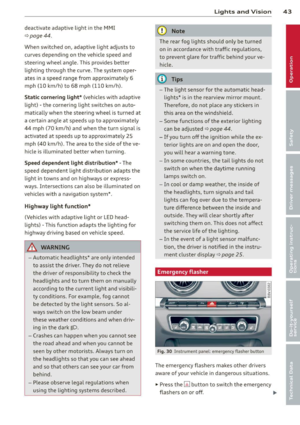 45
45 46
46 47
47 48
48 49
49 50
50 51
51 52
52 53
53 54
54 55
55 56
56 57
57 58
58 59
59 60
60 61
61 62
62 63
63 64
64 65
65 66
66 67
67 68
68 69
69 70
70 71
71 72
72 73
73 74
74 75
75 76
76 77
77 78
78 79
79 80
80 81
81 82
82 83
83 84
84 85
85 86
86 87
87 88
88 89
89 90
90 91
91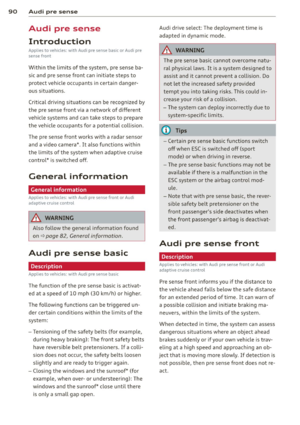 92
92 93
93 94
94 95
95 96
96 97
97 98
98 99
99 100
100 101
101 102
102 103
103 104
104 105
105 106
106 107
107 108
108 109
109 110
110 111
111 112
112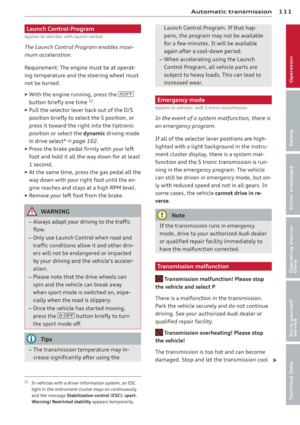 113
113 114
114 115
115 116
116 117
117 118
118 119
119 120
120 121
121 122
122 123
123 124
124 125
125 126
126 127
127 128
128 129
129 130
130 131
131 132
132 133
133 134
134 135
135 136
136 137
137 138
138 139
139 140
140 141
141 142
142 143
143 144
144 145
145 146
146 147
147 148
148 149
149 150
150 151
151 152
152 153
153 154
154 155
155 156
156 157
157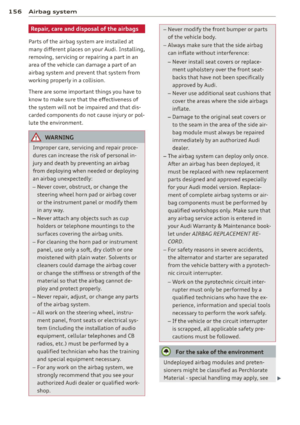 158
158 159
159 160
160 161
161 162
162 163
163 164
164 165
165 166
166 167
167 168
168 169
169 170
170 171
171 172
172 173
173 174
174 175
175 176
176 177
177 178
178 179
179 180
180 181
181 182
182 183
183 184
184 185
185 186
186 187
187 188
188 189
189 190
190 191
191 192
192 193
193 194
194 195
195 196
196 197
197 198
198 199
199 200
200 201
201 202
202 203
203 204
204 205
205 206
206 207
207 208
208 209
209 210
210 211
211 212
212 213
213 214
214 215
215 216
216 217
217 218
218 219
219 220
220 221
221 222
222 223
223 224
224 225
225 226
226 227
227 228
228 229
229 230
230 231
231 232
232 233
233 234
234 235
235 236
236 237
237 238
238 239
239 240
240 241
241 242
242 243
243 244
244 245
245 246
246 247
247 248
248 249
249 250
250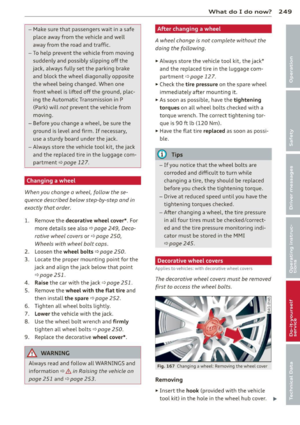 251
251 252
252 253
253 254
254 255
255 256
256 257
257 258
258 259
259 260
260 261
261 262
262 263
263 264
264 265
265 266
266 267
267 268
268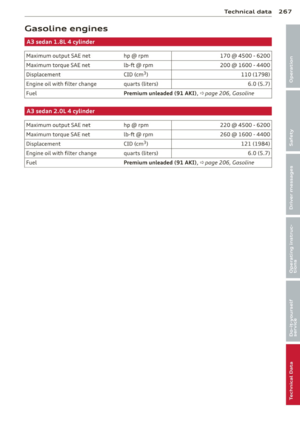 269
269 270
270 271
271 272
272 273
273 274
274 275
275 276
276 277
277 278
278 279
279 280
280 281
281 282
282 283
283 284
284 285
285 286
286 287
287






